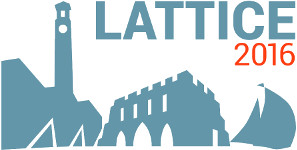Speaker
Mr
Alessandro Sciarra
(Goethe Universität)
Description
The QCD phase diagram at imaginary chemical potential exhibits a rich structure and studying it
can constrain the phase diagram at real values of the chemical potential. Moreover, at imaginary
chemical potential standard numeric techniques based on importance sampling can be applied, since
no sign problem is present.
In the last decade, a first understanding of the QCD phase diagram at imaginary chemical potential
has been developed, but it is so far based on investigations on coarse lattices ($N_t=4,\;a=0.3$ fm).
Considering the $N_f=2$ case, at the Roberge-Weiss critical value of the imaginary chemical potential,
the chiral/deconfinement transition is first order for light/heavy quark masses
and second order for intermediate values of the mass: there are then two tricritical masses, whose
position strongly depends on the lattice spacing and on the discretisation. On $N_t=4$, we have the chiral
$m_{\pi}^{\mbox{tric.}}\simeq400$ MeV with unimproved staggered fermions and $m_{\pi}^{\mbox{tric.}}\simeq900$ MeV with unimproved pure Wilson fermions.
Employing finite size scaling we investigate the change of this tricritical point between $N_t=4$ and $N_t=6$
as well as between Wilson and staggered discretisations.
Author
Mr
Alessandro Sciarra
(Goethe Universität)
Co-author
Prof.
Owe Philipsen
(Goethe Universität)

